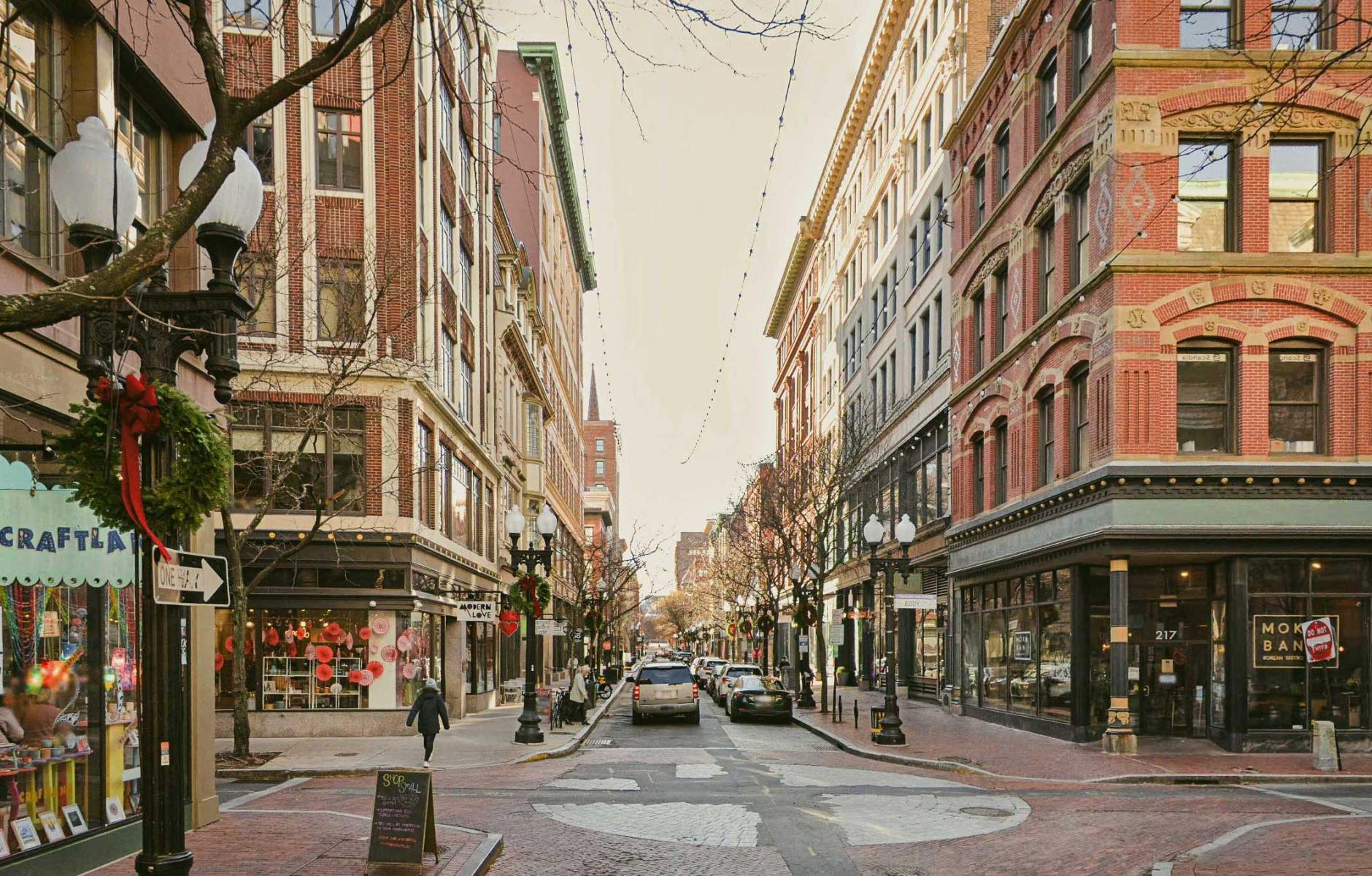
From plan to place: Providence's downtown renaissance
Editor's note: In the early 1990s, before I became a new urbanist, I visited Providence in the summer and was amazed at downtown, with its stunning turn-of-the-century commercial architecture that appeared to be mostly vacant. I had never seen anything that empty and that intact. I later learned that planning was going on behind the scenes, backed by investment, which was beginning to re-occupy those buildings. By 2006, when I attended CNU 14, it seemed that downtown had turned a corner, like night and day, in a decade. Please read Susan Henderson's piece below on the renaissance of Providence, which will, in four months, host its second CNU—Rob.
In 2006, when the Congress for the New Urbanism held its 14th annual gathering in Providence, Rhode Island, I was one of those wandering the city’s streets, marveling at its potential. The historic architecture? Gorgeous. The streets? Walkable, if a little quiet. The potential? Practically shouting from every cornice.
Of course, Providence’s downtown renaissance didn’t start overnight. One of the most transformative projects began in the 1980s and 1990s with the Providence River Relocation initiative. City planners and state officials worked to daylight the Woonasquatucket, Moshassuck, and Providence Rivers, tearing down the "World’s Widest Bridge" and creating Waterplace Park—a move that reconnected the city to its waterways, improved traffic flow, and spurred over $1 billion in investment. This ambitious infrastructure investment laid the groundwork for the Providence we see today.
Nearly two decades later, I’m headed back—this time for CNU 33—anxious to see how that promise has been realized. Downtown Providence is now a vibrant hub of art, culture, and urban living, and I can’t wait to see it for myself.
The Downcity Master Plan: Building a foundation for change
Every great comeback starts with a plan, and in Providence’s case, it was the 1991 Downcity Master Plan by DPZ CoDesign and Cornish Associates. Known for their transformative work in urban centers, DPZ brought their trademark mix of pragmatism and vision to reimagining Providence’s urban core.
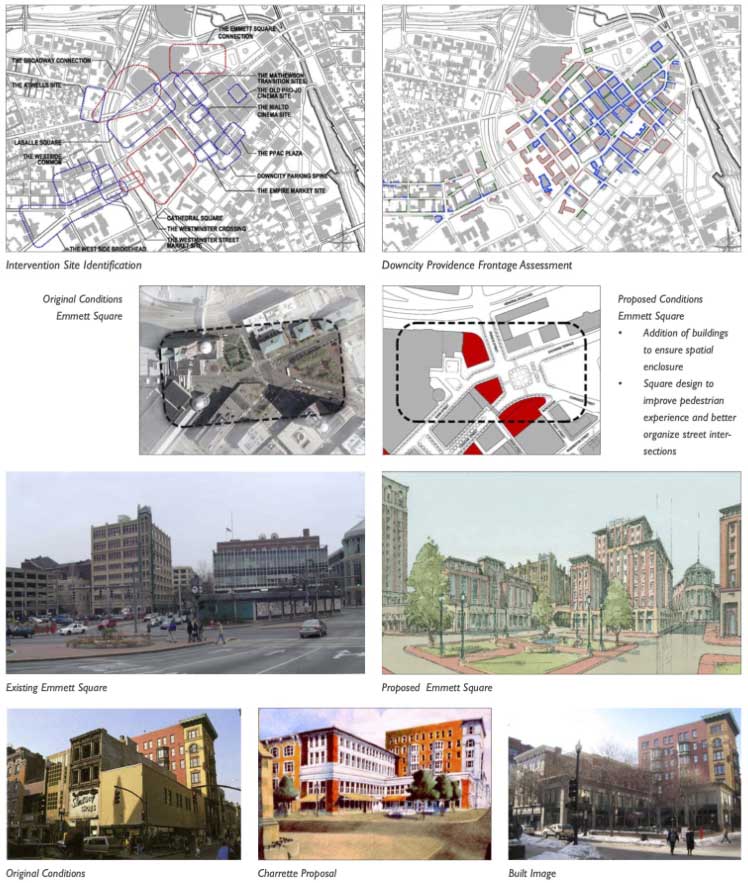
The idea was simple but ambitious: take a struggling downtown and turn it into a thriving mixed-use district where pedestrians rule, historic buildings are given new life, and local businesses can flourish. Westminster Street became the testing ground. Once a shadow of its former self, the street now hums with cafes, boutiques, and public spaces that invite people to linger. The approach was incremental—a block-by-block resurrection that honored the city’s character while setting the stage for its future.
Redevelopment in Downcity
Some cities bulldoze their history to make way for the new. Providence chose a different path, and it’s paid off in spades. A prime example? The transformation of historic buildings into modern mixed-use developments that blend old-world charm with contemporary functionality.

A key figure in this transformation is Buff Chace, founder and managing partner of Cornish Associates. Since the 1990s, Chace has been instrumental in shaping the revitalization of Westminster Street and beyond, leading projects that have turned vacant structures into thriving urban spaces. His work on the Westminster Lofts breathed new life into underutilized buildings, creating a dynamic mix of residential and commercial spaces that anchor a revitalized corridor.
Chace’s impact extends to the adaptive reuse of the Lapham, Wit, and Trayne Buildings, completed in 2021. This project preserved nearly an entire block of historic architecture while introducing affordable housing, creative office spaces, and street-level retail. His ability to see potential where others saw decay was crucial in Providence’s comeback story—an example of how visionary developers can transform a city’s trajectory.
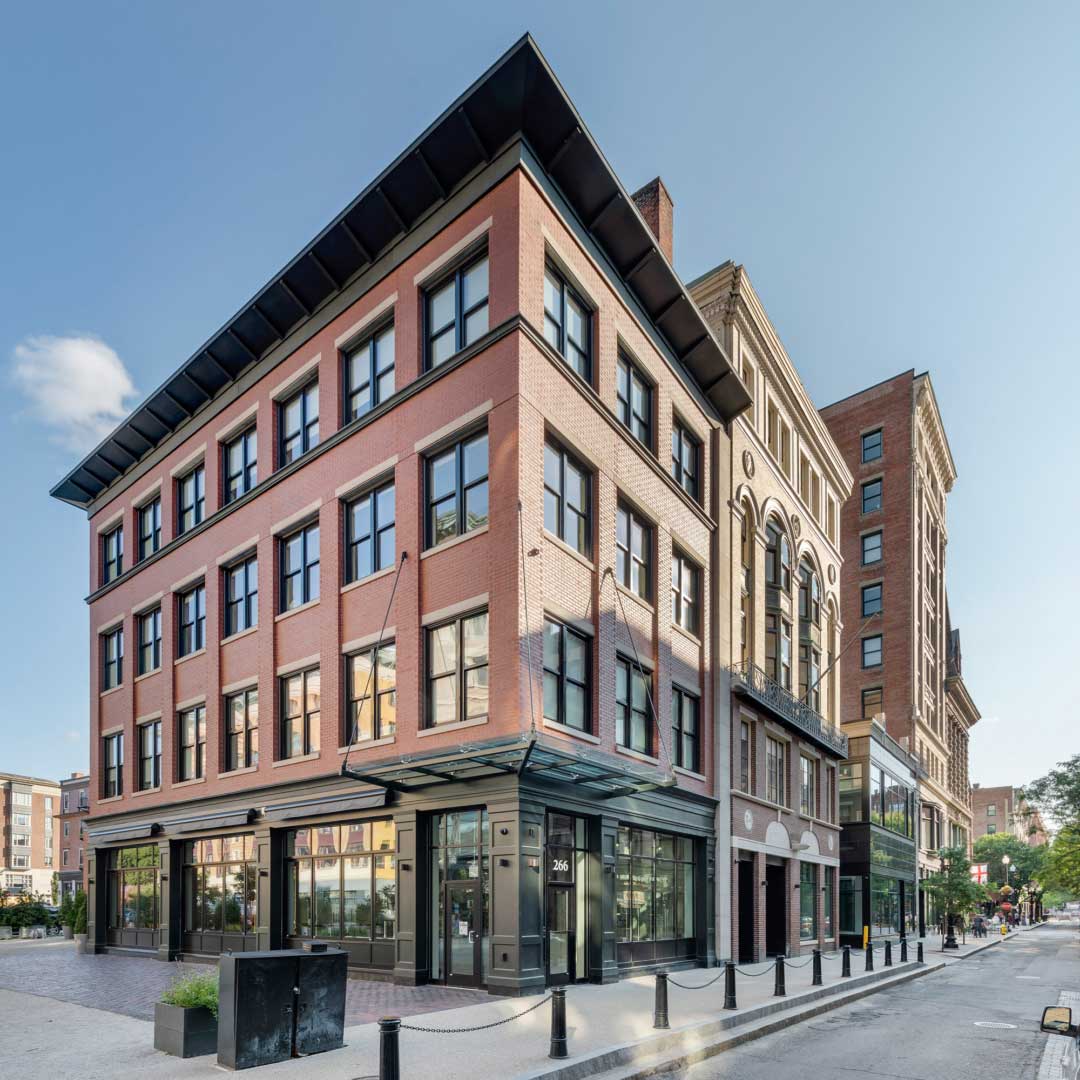
This kind of leadership isn’t unique to Providence. Across the country, developers like Dan Gilbert in Detroit and the teams behind Bedford Hill in Pittsburgh have spearheaded similar urban revivals, proving that the right mix of investment, patience, and community engagement can turn struggling districts into thriving hubs of activity. The lessons from Providence—and from these other cities—serve as blueprints for anyone looking to make meaningful change in the places they love.
Housing that builds community
The revitalization of Providence’s historic fabric isn’t just about restoring buildings—it’s about ensuring those spaces serve the people who call the city home. The adaptive reuse of the Lapham, Wit, and Trayne Buildings, designed by Union Studio Architecture & Community Design is a prime example of how redevelopment can be more than just preservation; it can create places where people want to live, work, and gather.
These projects deliver tangible social and economic benefits. By integrating affordable housing, fostering local businesses, and activating public spaces, they contribute to a more inclusive and resilient urban fabric. This kind of thoughtful redevelopment ensures that Providence’s renewal benefits a diverse range of residents, maintaining the city’s distinct character while welcoming new opportunities.
And in Providence, design isn’t just about function—it’s about fostering connection. The city’s commitment to building places that bring people together is nowhere more evident than in its thriving arts scene.
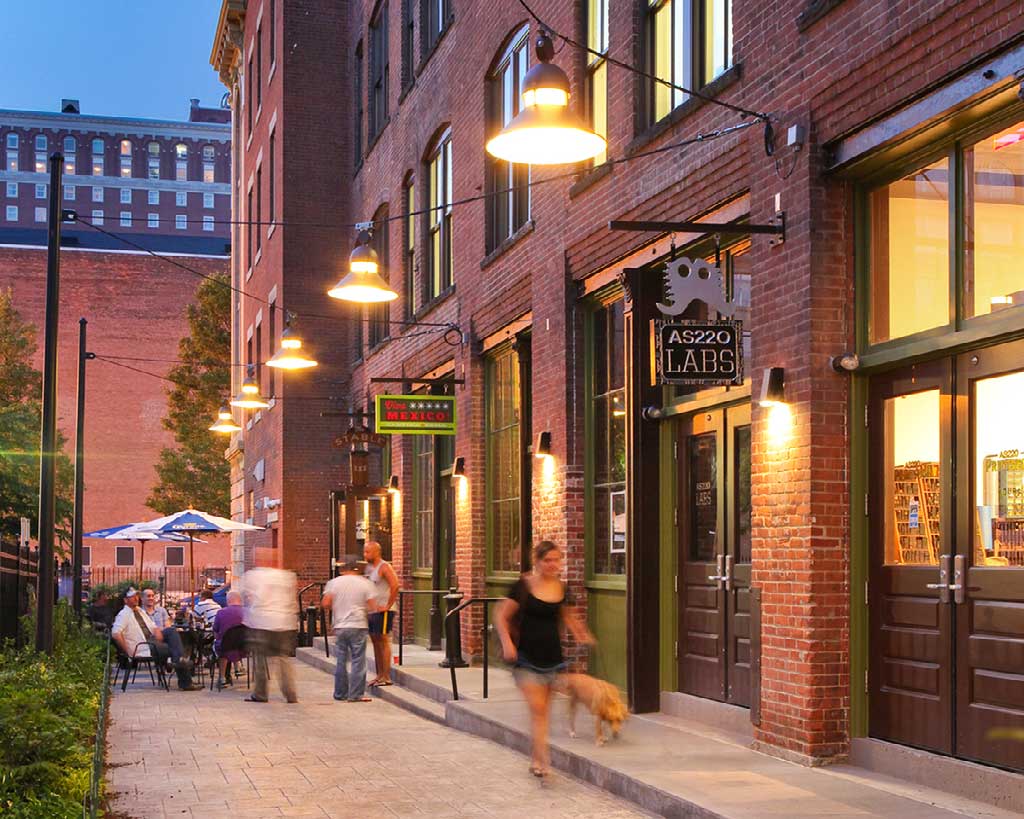
Arts and culture: The soul of Downtown Providence
If the streets and buildings are the bones of a city, arts and culture are its beating heart. A major force behind this creative energy is the Rhode Island School of Design (RISD), whose expansion into downtown has helped shape the city’s identity. Renovations such as the transformation of the former Hospital Trust building into student housing, the adaptive reuse of the Fletcher Building, and the construction of the Chace Center have brought students and faculty directly into the urban core. This influx of creative minds has strengthened Providence’s reputation as a hub for art and design, fueling local businesses, galleries, and performance spaces.
Beyond RISD, the city’s investment in education extends to its charter schools, which have been growing in number since the late 1990s. With many located in the urban core, these institutions bring students, teachers, and families into downtown daily, further contributing to the city’s vibrancy. Their presence reinforces Providence as a place where learning, culture, and community intersect, creating an atmosphere where people don’t just pass through—they engage, create, and connect.
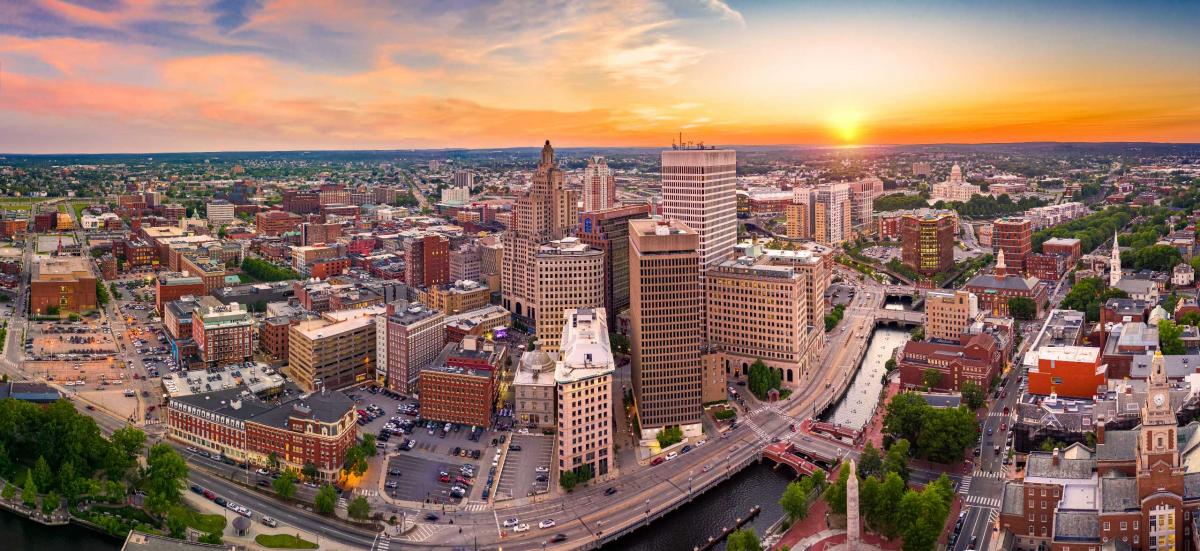
Public art has also played a defining role in shaping the city’s identity. Since 2012, The Avenue Concept has been transforming urban spaces with large-scale murals, sculptures, and installations that add color, movement, and meaning to the built environment. Programs like the Mural Public Art Program and the Ripples Project have turned blank walls into vibrant storytelling canvases, deepening the connection between residents and their city. These efforts ensure that Providence’s artistic energy is not confined to museums and theaters—it’s woven into the very fabric of the city.
The Providence Performing Arts Center (PPAC) and Trinity Repertory Company have long been pillars of the city’s cultural scene, drawing audiences from across the region. But it’s not just the marquee names making an impact. The AS220 arts collective has turned creativity into a community affair, offering spaces for artists to work, perform, and collaborate. Together, these institutions have helped transform downtown into a place where art isn’t just something you visit—it’s something you live.
For urbanists, Providence’s vibrant cultural landscape is a reminder of why cities matter. Great public spaces are important, but it’s the life within them that makes them unforgettable.
A model for mid-sized cities
Providence’s story isn’t just for Providence. It’s a blueprint for mid-sized cities everywhere, proving that you don’t need the resources of a megacity to make meaningful change. Thoughtful planning, incremental growth, and a commitment to collaboration can transform any city into a place people love to call home.
As a model for other cities, Providence has been recognized for projects that align with the principles of New Urbanism. Two standout projects have received CNU Charter Awards, showcasing the city's commitment to historic preservation and adaptive reuse:

- Microlofts at The Arcade Providence (2015): This project transformed America’s oldest indoor shopping mall into microloft apartments, preserving the historic structure while introducing modern urban living spaces. It’s a shining example of how an underutilized landmark can be repurposed to meet contemporary needs while maintaining its historic integrity.
- SCLT Headquarters (2023): Designed by Union Studio Architecture & Community Design, this adaptive reuse project repurposed a historic building to support the Southside Community Land Trust. By providing space for urban agriculture and community engagement, it demonstrates how thoughtful redevelopment can serve both people and place.

These award-winning projects illustrate how Providence has successfully merged historic preservation with forward-thinking urbanism, offering valuable lessons for cities looking to balance tradition with innovation.
Looking ahead: CNU 33 in Providence
As Providence takes the stage for CNU 33 in June, the city itself becomes the lesson plan—a living lab of sustainable urbanism. Walk its streets, feel its energy, and see how history and innovation collide in a way that only happens when people put place first. And here’s the thing: Providence isn’t done. Not even close. The work of building better places never really ends. It evolves, street by street, block by block. The only question is—what’s next?
Note: This article originally appeared on the PlaceMakers blog, Placemaking Journal.




